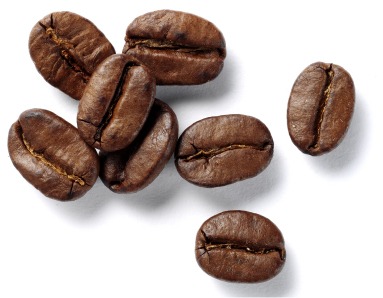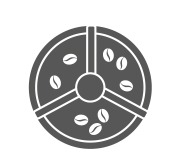
MONTHS OF HARD WORK AND EFFORT.
ALL THE COLOURS OF COFFEE

Cultivation
Seedlings are transplanted into the fields when they are 10 months old and about 30 centimetres high. Four years of meticulous care are needed, before the new plant can produce the coffee fruit. The weeds must be eradicated, the seedlings must be fertilised, pruned and must be positioned with the necessary shade.

Harvesting
One of the most important and determining steps for product quality is the harvesting of the fruit. There are two methods: picking (manual) and stripping (mechanical). With picking, ripe fruits can be selected from each branch one by one, while with the stripping method harvests all of the fruit from the branch. The first method, which is much more precise but expensive, is used for high-quality coffee, especially for Arabica varieties. The second method is used for less valuable coffee, especially for Robusta varieties. Harvesting can either take several months, seeing as the coffee fruits ripen at different times, even on the same plant, or in just a few days once a year, which is the process in place in large plantations, where unripe fruit is also harvested.

Selection
Once harvested, the ripe fruit is separated from the spoiled fruit and then the process that separates the pulp from the pair of seeds begins. There are also two methods for this operation: “dry” or “wet”.

De-pulping
The so-called green coffee bean, which is the product that is usually stored and then exported in large jute sacks, is obtained from both the wet and dry methods. Upon arrival at our factory and before being accepted, each batch is subjected to a sample analysis to check that it meets our required quality standards.

Dry-process
The fruit is dried out in the open and routinely turned, for about twenty days. After that the drupe are crushed and the beans are separated from the parchment membrane that surrounds them. The best dry-processed coffee comes from: Yemen, Ethiopian Harrar coffee and the best Brazilian coffee.
Wet-processed
The drupe is immersed in large tanks full of water where they are left to ferment and are mechanically de-pulped. The beans are dried by the sun or in hot-air machines. This process is used with fine quality coffee (Arabica) in Central and South America, to create the so-called “washed” coffee.

Roasting
Roasting is the process that ensured the success of coffee and Malabar entrusts the process to true masters. Each variety is roasted separately. In fact, the beans vary in size and characteristics and so the time it takes to reach the ideal roasting point varies, which is essential to exalt their flavour and fragrance. During this process, the aromatic principles develop and release the essential oils that give coffee its typical pleasant qualities. The beans are constantly spun and when the temperature reaches 200 °C they swell, increase in volume and lose weight (since much of the water contained within them evaporates) until they take on a dark brown colour. The care and control of our experts and the use of sophisticated technologies guarantee the constant quality over time of the processed product.

Blending
Experience and specialisation are also important here and each master has his own secrets. There are two important factors to take into account when preparing a good blend: the composition and the degree of roasting. Blends made only with Arabica, although of different origin, are sweeter and more aromatic, while those made up of Arabica and Robusta are more full-bodied and with a stronger and more decisive flavour. Malabar’s blends are a symphony of fragrances, flavours and aromas that enhance the pleasure of a cup of coffee.

Grinding
The optimum grinding degree depends on the beverage preparation method: it must be medium-fine for a moka coffee maker and finer for espresso machines. If the coffee is too roughly ground, the flavour cannot completely transmit into the beverage, whereas, if it is too finely ground it creates resistance and the water cannot pass, causing an excessive rise in temperature and consequently a burnt taste.

